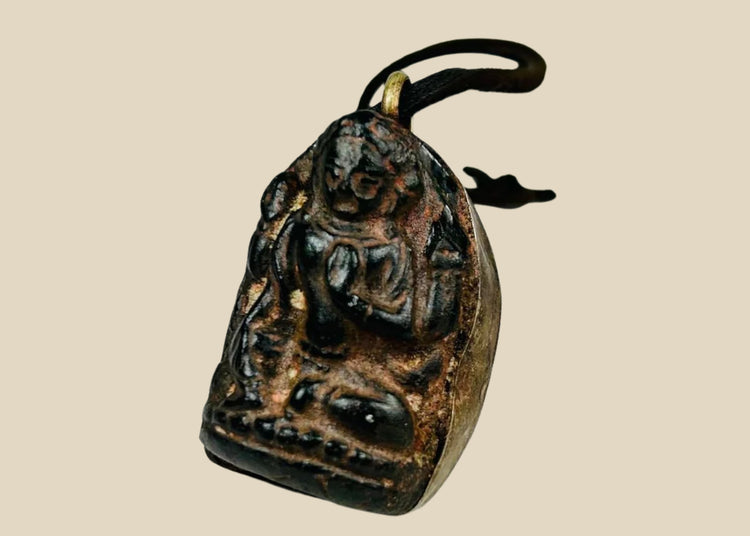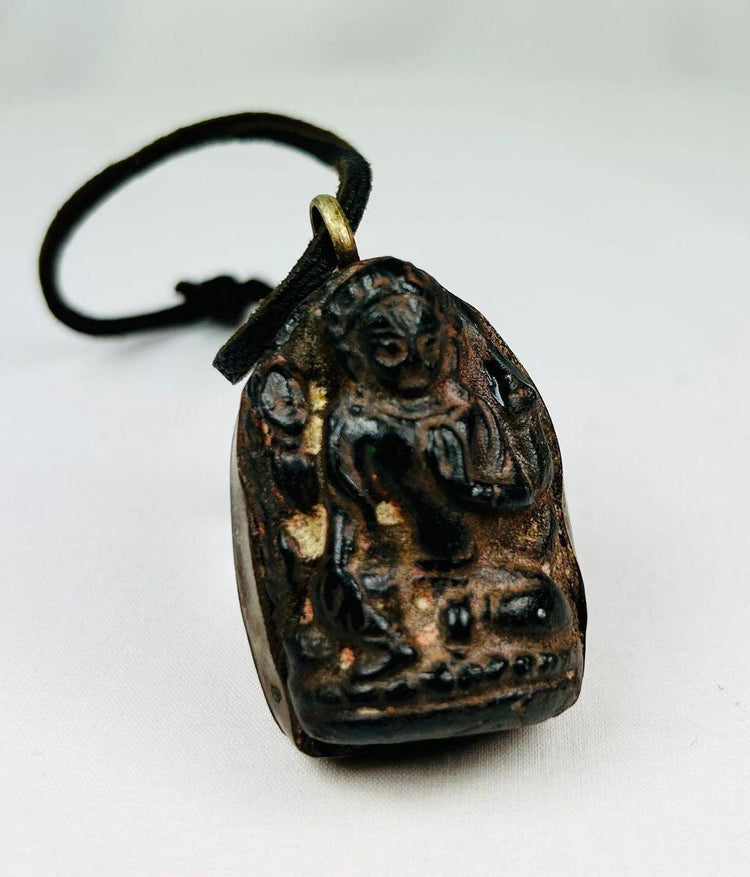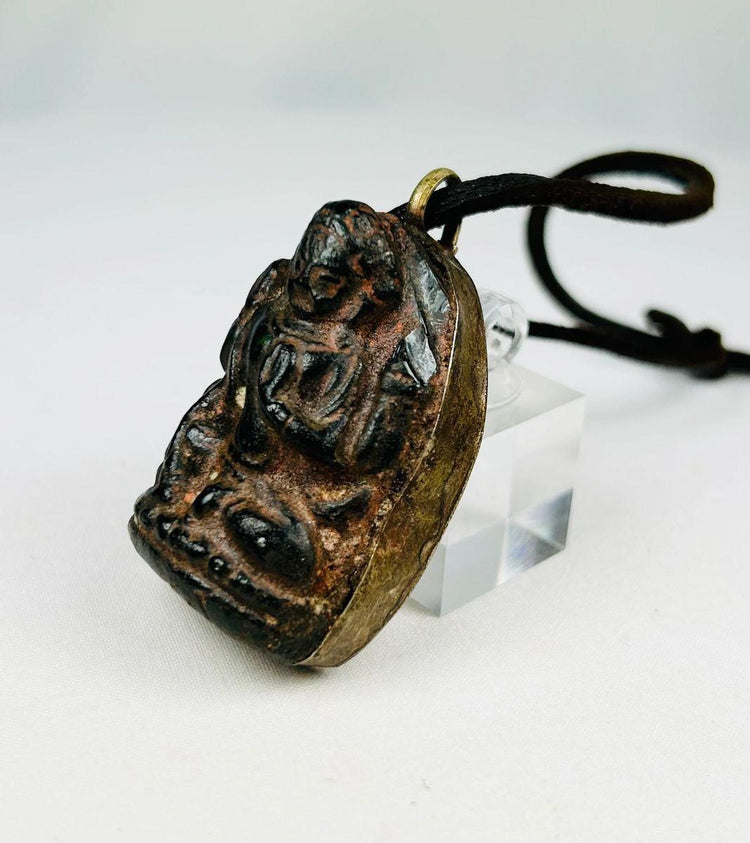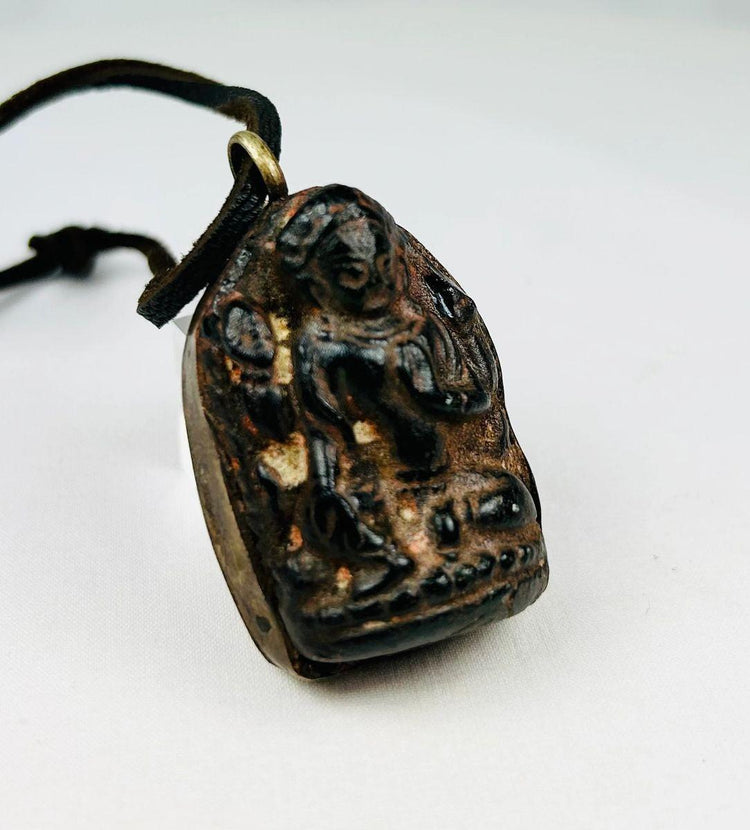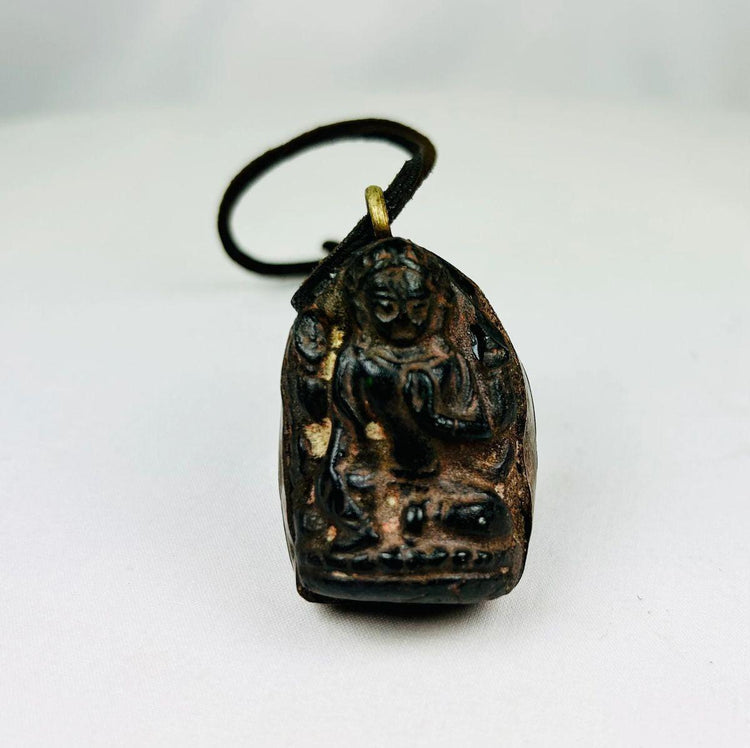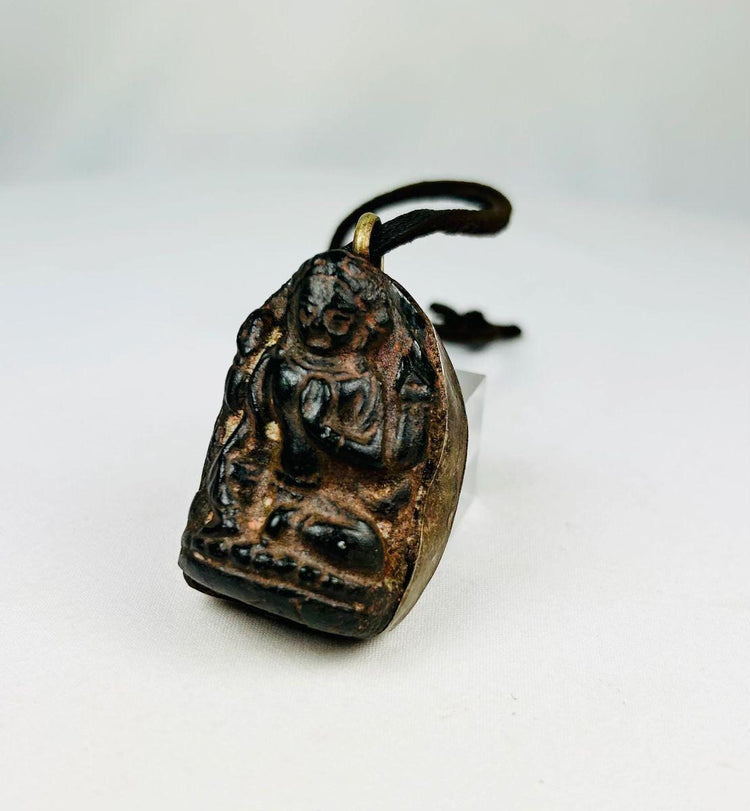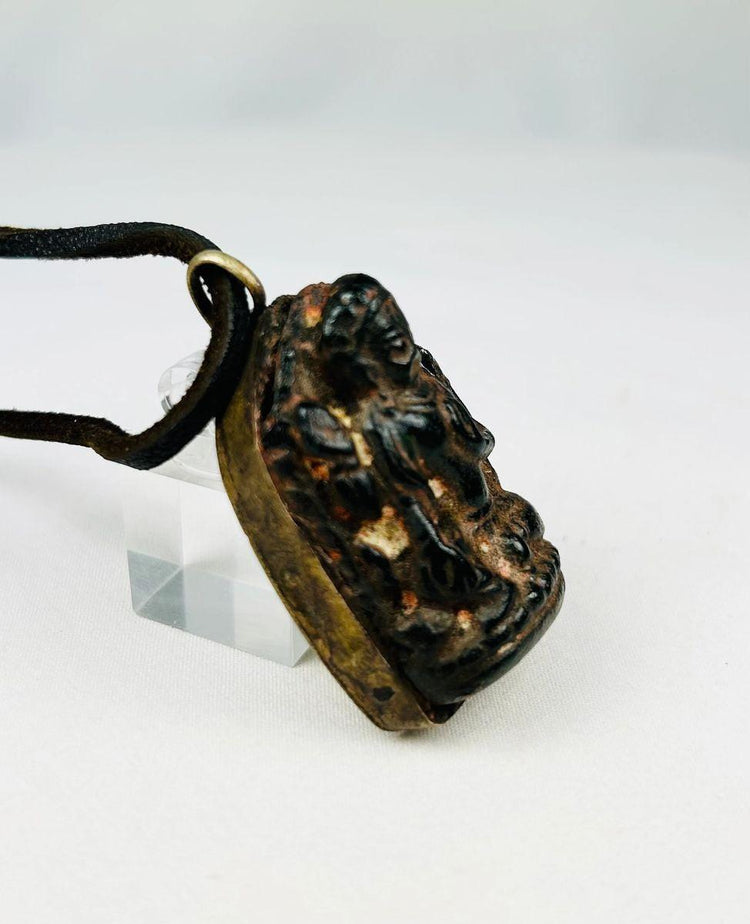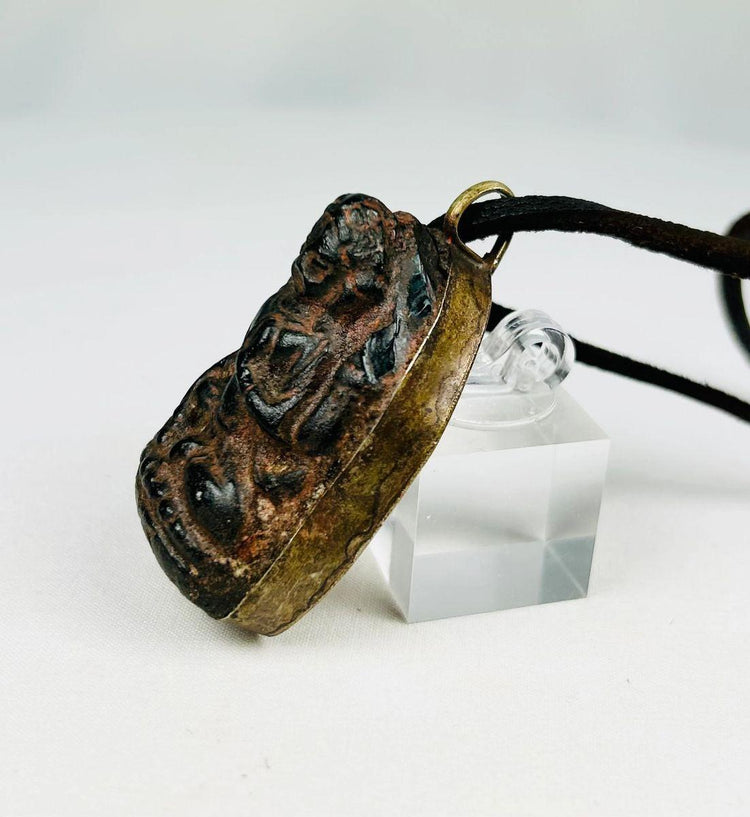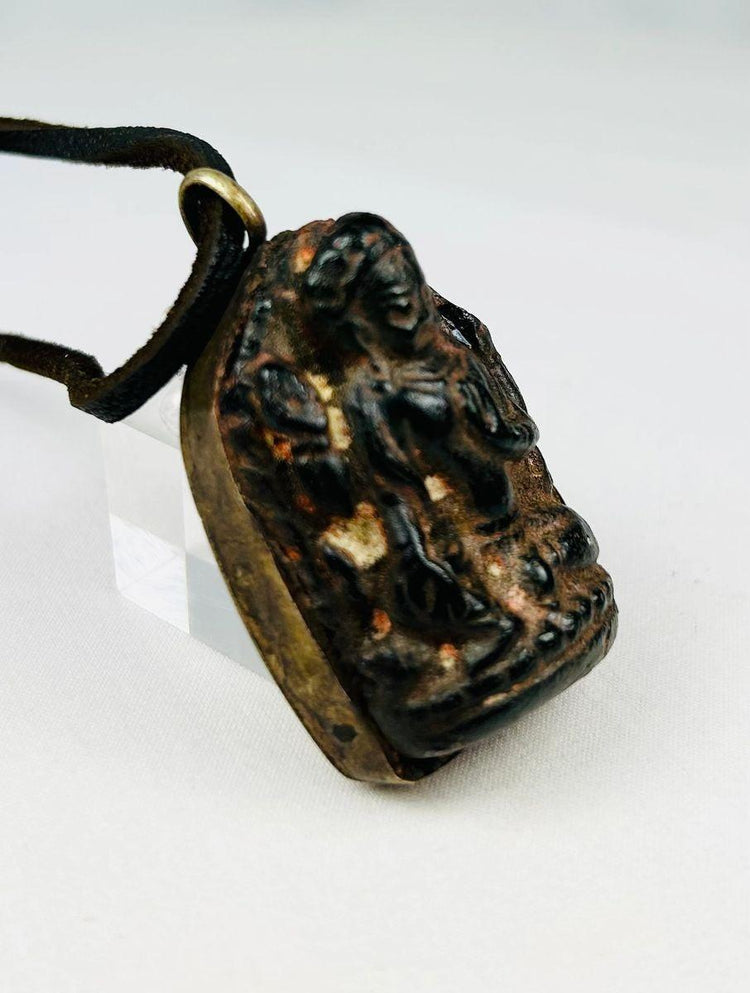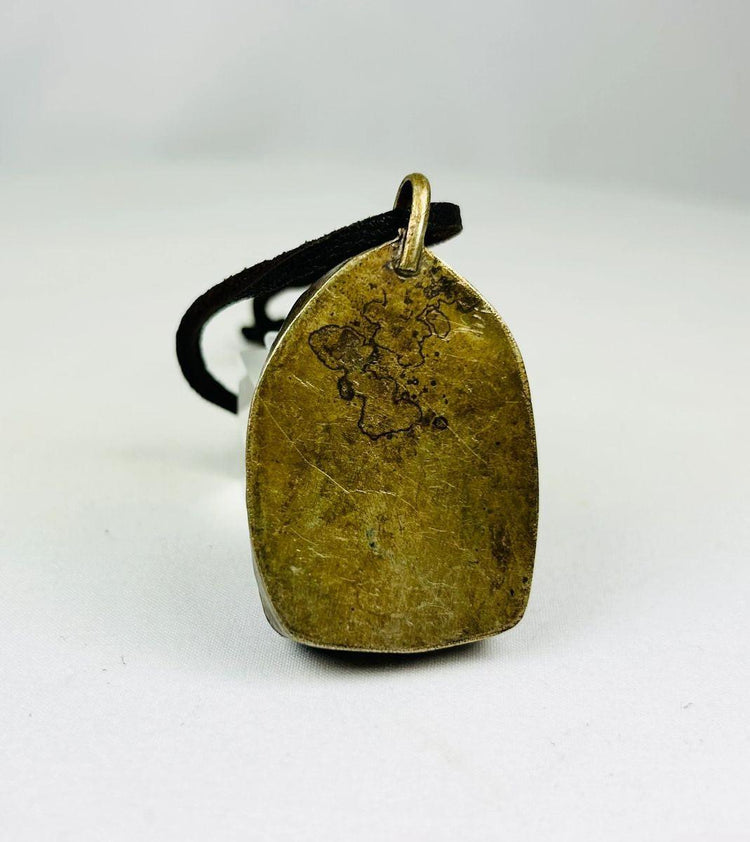Antique Tibetan Devotional Pendant | Bronze Buddha Reliquary Amulet | Late 19th Century
Description
More
Less
Historical Context & Origin
Region: Himalayan Region (Tibet/Nepal)
Material: Cast bronze with brass backing and leather cord
Period: Late 19th to early 20th century (circa 1880–1920)
Description
This finely cast bronze amulet pendant features a seated Buddha within an arched shrine-style niche, designed to embody protection and spiritual presence during travel. Crafted using the traditional lost-wax casting method, the piece displays a bronze front with detailed relief work and a sealed brass backplate. A leather cord passes through the original side loops, allowing the amulet to be worn as a necklace or attached to belongings. Its closed reliquary form suggests it once contained sacred relics, miniature scrolls, or offerings—now long since absent. With its worn details and rich surface patina, this devotional pendant reflects both religious purpose and artisan skill.
Features
- Cast bronze amulet with Buddha figure in meditation pose
- Shrine-form niche with detailed relief decoration
- Patinated brass backplate, sealed and non-opening
- Side loops with original leather cord intact
- Traditional lost-wax casting technique
- Naturally aged patina and surface wear from devotional use
Cultural Significance
Amulets such as this were integral to Tibetan and Nepalese Buddhist practice, carried by monks, pilgrims, and laypeople alike. Believed to be blessed by lamas, they functioned as portable shrines, providing both spiritual protection and a focus for meditation during journeys. Today, they remain powerful symbols of Buddhist devotion and are valued for their cultural and spiritual resonance.
Condition
Good antique condition with heavy surface wear consistent with age and devotional handling. Patina, oxidation, and minor pitting present. Structurally stable and display-ready.
Dimensions (approximate)
Height: 2 in
Width: 1.5 in
Age
Estimated late 19th to early 20th century (circa 1880–1920)
Description
Historical Context & Origin
Region: Himalayan Region (Tibet/Nepal)
Material: Cast bronze with brass backing and leather cord
Period: Late 19th to early 20th century (circa 1880–1920)
Description
This finely cast bronze amulet pendant features a seated Buddha within an arched shrine-style niche, designed to embody protection and spiritual presence during travel. Crafted using the traditional lost-wax casting method, the piece displays a bronze front with detailed relief work and a sealed brass backplate. A leather cord passes through the original side loops, allowing the amulet to be worn as a necklace or attached to belongings. Its closed reliquary form suggests it once contained sacred relics, miniature scrolls, or offerings—now long since absent. With its worn details and rich surface patina, this devotional pendant reflects both religious purpose and artisan skill.
Features
- Cast bronze amulet with Buddha figure in meditation pose
- Shrine-form niche with detailed relief decoration
- Patinated brass backplate, sealed and non-opening
- Side loops with original leather cord intact
- Traditional lost-wax casting technique
- Naturally aged patina and surface wear from devotional use
Cultural Significance
Amulets such as this were integral to Tibetan and Nepalese Buddhist practice, carried by monks, pilgrims, and laypeople alike. Believed to be blessed by lamas, they functioned as portable shrines, providing both spiritual protection and a focus for meditation during journeys. Today, they remain powerful symbols of Buddhist devotion and are valued for their cultural and spiritual resonance.
Condition
Good antique condition with heavy surface wear consistent with age and devotional handling. Patina, oxidation, and minor pitting present. Structurally stable and display-ready.
Dimensions (approximate)
Height: 2 in
Width: 1.5 in
Age
Estimated late 19th to early 20th century (circa 1880–1920)
You May Also Like


























